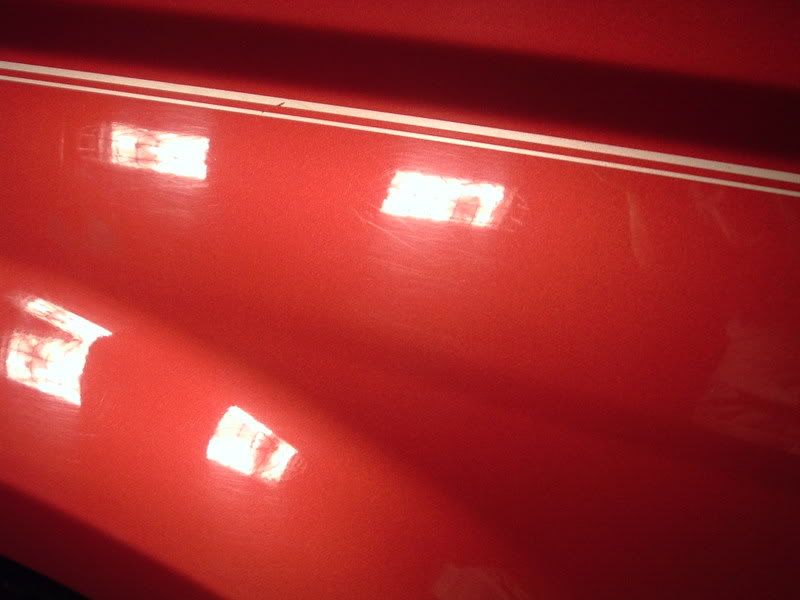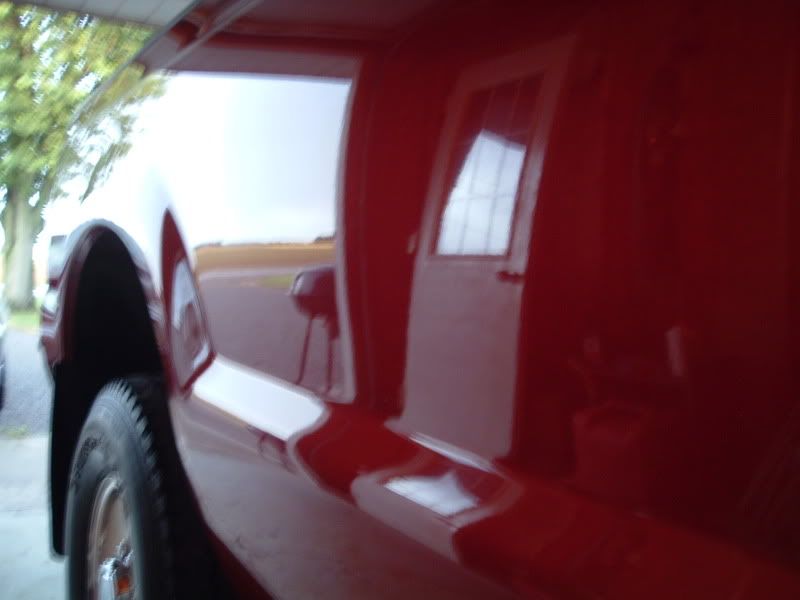ne1buthillary
New member
I bought the pc about a month ago and used it on two vehicles. On my own vehicle SIP with 4" orange pads did a pretty decent job but there were still some scratches that I thought were pretty light that I couldn't remove after multiple applications. The second vehicle was a mid nineties gm pickup with medium swirls and scratches.. this is the one that made me buy a rotary. The pc w/ 4" pads and megs 105 couldn't touch some of the stuff that still wasn't that deep imo.
I decided to get the makita and boy am I glad I did. I detailed my father's '03 f250 the other day since it was in sad shape and had plenty of paint to play with. I've seen him drive this thing through a woods and he dries it with a bath towel if that gives you any idea. I gave the truck a good wash and clay then threw on a white pad and used 106ff at about 900rpm to get a feel for the beast. After I had a handle on the monster I used SIP and stepped it up to about 1200 rpm which did some pretty decent correction. Still left some scratches behind but a major improvement. After about twenty minutes of that I decided to step up to the pfw. all i can say is WOW. The rotary was gliding around like a professional figure skater.. much better than the white pad even. I did some more testing paying close attention to the correction and the heat of the panel. I finished off the rest of the truck with pfw at about 1500 rpm and a mix of sip/106ff. I'd say I removed about 90% of the scratches. Considering the entire truck looked like it had been washed with steel wool before I began it was a major improvement. It took me about 8 hours but I think it would have taken me 12 with the pc with inferior results. I do have some questions though...
Is it typical for SIP and pfw to finish down lsp ready? I pulled it out into the sun and neither myself or two others could see any holograms. Either I had beginners luck or we're all just blind. It looked even better after a coat of DWG and a wax.
What rpm do you run pfw at? I was afraid to go over 1500rpm but the panel was barely even warm.
How long does it usually take for SIP to break down via rotary. In the beginning I believe I was working it much too long.. guess I was still working it like I would with a pc. After I figured out what I was doing it seemed to be done after about 3 passes?
Excuse my crappy photography but here's the before. It looked twice as bad in person.

After. Even worse photography but you get the idea. After 8 hours of swinging that makita around my arms were quite tired :waxing:

I decided to get the makita and boy am I glad I did. I detailed my father's '03 f250 the other day since it was in sad shape and had plenty of paint to play with. I've seen him drive this thing through a woods and he dries it with a bath towel if that gives you any idea. I gave the truck a good wash and clay then threw on a white pad and used 106ff at about 900rpm to get a feel for the beast. After I had a handle on the monster I used SIP and stepped it up to about 1200 rpm which did some pretty decent correction. Still left some scratches behind but a major improvement. After about twenty minutes of that I decided to step up to the pfw. all i can say is WOW. The rotary was gliding around like a professional figure skater.. much better than the white pad even. I did some more testing paying close attention to the correction and the heat of the panel. I finished off the rest of the truck with pfw at about 1500 rpm and a mix of sip/106ff. I'd say I removed about 90% of the scratches. Considering the entire truck looked like it had been washed with steel wool before I began it was a major improvement. It took me about 8 hours but I think it would have taken me 12 with the pc with inferior results. I do have some questions though...
Is it typical for SIP and pfw to finish down lsp ready? I pulled it out into the sun and neither myself or two others could see any holograms. Either I had beginners luck or we're all just blind. It looked even better after a coat of DWG and a wax.
What rpm do you run pfw at? I was afraid to go over 1500rpm but the panel was barely even warm.
How long does it usually take for SIP to break down via rotary. In the beginning I believe I was working it much too long.. guess I was still working it like I would with a pc. After I figured out what I was doing it seemed to be done after about 3 passes?
Excuse my crappy photography but here's the before. It looked twice as bad in person.

After. Even worse photography but you get the idea. After 8 hours of swinging that makita around my arms were quite tired :waxing:

